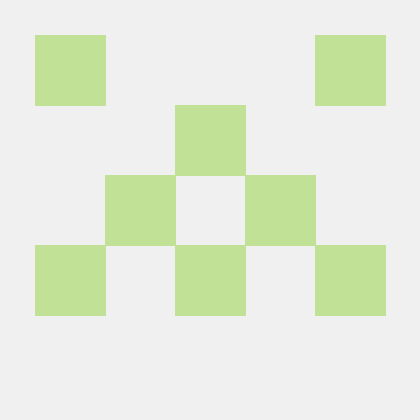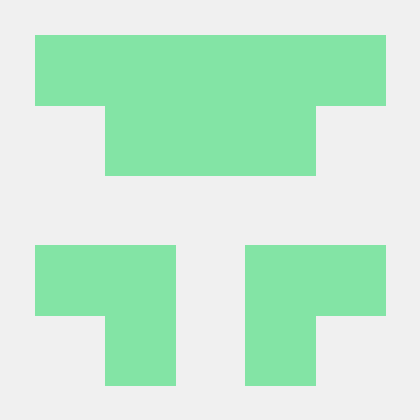@express-document-sdk / StrokeShapeNode
Class: StrokeShapeNode
A StrokeShapeNode is prepackaged shape that has a single stroke property and appears as a leaf node in the UI, even if it is composed of multiple separate paths.
Hierarchy
↳
StrokeShapeNode
Accessors
allChildren
• get allChildren(): Readonly<Iterable<Node>>
Returns a read-only list of all children of the node. General-purpose content containers such as ArtboardNode or
GroupNode also provide a mutable children list. Other nodes with a more specific structure can
hold children in various discrete "slots"; this allChildren list includes all such children and reflects their
overall display z-order.
The children of a Node are always other Node classes (never the more minimal BaseNode).
Returns
Readonly<Iterable<Node>>
Inherited from
StrokableNode.allChildren
blendMode
• get blendMode(): BlendMode
Blend mode determines how a node is composited onto the content below it. The default value is normal for most nodes, and passThrough for GroupNodes.
Returns
Inherited from
StrokableNode.blendMode
• set blendMode(value): void
Parameters
| Name | Type |
|---|---|
value |
Returns
void
Inherited from
StrokableNode.blendMode
boundsInParent
• get boundsInParent(): Readonly<Rect>
An axis-aligned box in the parent’s coordinate space encompassing the node’s layout bounds (its boundsLocal, as transformed by its position and rotation relative to the parent). If the node has rotation, the top-left of its boundsLocal box (aligned to its own axes) is not necessarily located at the top-left of the boundsInParent box (since it's aligned to the parent's axes). This value is well-defined even for an orphan node with no parent.
Returns
Readonly<Rect>
Inherited from
StrokableNode.boundsInParent
boundsLocal
• get boundsLocal(): Readonly<Rect>
The bounding box of the node, expressed in the node's local coordinate space (which may be shifted or rotated relative to its parent). Generally matches the selection outline seen in the UI, encompassing the vector path "spine" of the shape as well as its stroke, but excluding effects such as shadows.
The top-left corner of the bounding box corresponds to the visual top-left corner of the node, but this value is not necessarily (0,0) – this is especially true for Text and Path nodes.
Returns
Readonly<Rect>
Inherited from
StrokableNode.boundsLocal
centerPointLocal
• get centerPointLocal(): Readonly<Point>
Position of the node's centerpoint in its own local coordinate space, i.e. the center of the boundsLocal box.
Returns
Readonly<Point>
Inherited from
StrokableNode.centerPointLocal
id
• get id(): string
A unique identifier for this node that stays the same when the file is closed & reopened, or if the node is moved to a different part of the document.
Returns
string
Inherited from
StrokableNode.id
locked
• get locked(): boolean
The node's lock/unlock state. Locked nodes are excluded from the selection (see selection), and cannot be edited by the user unless they are unlocked first.
Returns
boolean
Inherited from
StrokableNode.locked
• set locked(locked): void
Parameters
| Name | Type |
|---|---|
locked | boolean |
Returns
void
Inherited from
StrokableNode.locked
opacity
• get opacity(): number
The node's opacity, from 0.0 to 1.0
Returns
number
Inherited from
StrokableNode.opacity
• set opacity(opacity): void
Parameters
| Name | Type |
|---|---|
opacity | number |
Returns
void
Inherited from
StrokableNode.opacity
parent
• get parent(): undefined | BaseNode
The node's parent. The parent chain will eventually reach ExpressRootNode for all nodes that are part of the document content.
Nodes that have been deleted are "orphaned," with a parent chain that terminates in undefined without reaching the
root node. Such nodes cannot be selected, so it is unlikely to encounter one unless you retain a reference to a node
that was part of the document content earlier. Deleted nodes can be reattached to the scenegraph, e.g. via Undo.
Returns
undefined | BaseNode
Inherited from
StrokableNode.parent
rotation
• get rotation(): number
The node's local rotation angle in degrees, relative to its parent's axes. Use setRotationInParent to
change rotation by rotating around a defined centerpoint.
Returns
number
Inherited from
StrokableNode.rotation
rotationInScreen
• get rotationInScreen(): number
The node's total rotation angle in degrees, relative to the overall global view of the document – including any cumulative rotation from the node's parent containers.
Returns
number
Inherited from
StrokableNode.rotationInScreen
stroke
• get stroke(): undefined | Readonly<Stroke>
Returns
undefined | Readonly<Stroke>
Inherited from
StrokableNode.stroke
• set stroke(stroke): void
The stroke applied to the shape, if any.
Parameters
| Name | Type |
|---|---|
stroke | undefined | Stroke |
Returns
void
Inherited from
StrokableNode.stroke
topLeftLocal
• get topLeftLocal(): Readonly<Point>
Position of the node's top-left corner in its own local coordinate space, equal to (boundsLocal.x, boundsLocal.y). If the node is rotated, this is not the same as the top-left corner of boundsInParent.
Returns
Readonly<Point>
Inherited from
StrokableNode.topLeftLocal
transformMatrix
• get transformMatrix(): mat2d
The node's transform matrix relative to its parent.
Returns
Inherited from
StrokableNode.transformMatrix
translation
• get translation(): Readonly<Point>
The translation of the node along its parent's axes. This is identical to the translation component of
transformMatrix. It is often simpler to set a node's position using setPositionInParent than by
setting translation directly.
Returns
Readonly<Point>
Inherited from
StrokableNode.translation
• set translation(value): void
Parameters
| Name | Type |
|---|---|
value |
Returns
void
Inherited from
StrokableNode.translation
type
• get type(): SceneNodeType
The node's type.
Returns
Inherited from
StrokableNode.type
visualRoot
• get visualRoot(): VisualNode
The highest ancestor that still has visual presence in the document. Typically an Artboard, but for orphaned content, it will be the root of the deleted content (which might be this node itself).
Nodes that are both in the same visualRoot subtree lie within the same "visual space" of the document's structure. Nodes that are in different visual roots have no spatial relation to one another; there is no meaningful comparison or conversion between the bounds or coordinate spaces of such nodes.
Returns
Inherited from
StrokableNode.visualRoot
Methods
boundsInNode
▸ boundsInNode(targetNode): Readonly<Rect>
Convert the node's boundsLocal to an axis-aligned bounding box in the coordinate space of the target node. Both nodes must share the same visualRoot, but can lie anywhere within that subtree relative to one another (the target node need not be an ancestor of this node, nor vice versa).
Parameters
| Name | Type |
|---|---|
targetNode |
Returns
Readonly<Rect>
Inherited from
localPointInNode
▸ localPointInNode(localPoint, targetNode): Readonly<Point>
Convert a point given in the node’s local coordinate space to a point in the coordinate space of the target node. Both nodes must share the same visualRoot, but can lie anywhere within that subtree relative to one another (the target node need not be an ancestor of this node, nor vice versa).
Parameters
| Name | Type |
|---|---|
localPoint | |
targetNode |
Returns
Readonly<Point>
Inherited from
StrokableNode.localPointInNode
removeFromParent
▸ removeFromParent(): void
Removes the node from its parent - effectively deleting it, if the node is not re-added to another parent before the document is closed.
If parent is a basic ContainerNode, this is equivalent to node.parent.children.remove(node). For nodes with other
child "slots," removes the child from whichever slot it resides in, if possible. Throws if the slot does not permit
removal. No-op if node is already an orphan.
Returns
void
Inherited from
StrokableNode.removeFromParent
setPositionInParent
▸ setPositionInParent(parentPoint, localRegistrationPoint): void
Move the node so the given localRegistrationPoint in its local coordinates is placed at the given
parentPoint in its parent's coordinates (taking into account any rotation on this node, etc.).
Example
Center a rectangle within its parent artboard:
Copied to your clipboardrectangle.setPositionInParent({ x: artboard.width / 2, y: artboard.height / 2 },{ x: rectangle.width / 2, y: rectangle.height / 2 });
Parameters
| Name | Type | Description |
|---|---|---|
parentPoint | Point in this node's parent's coordinate space to move localRegistrationPoint to | |
localRegistrationPoint | Point in this node's local coordinate space to align with parentPoint |
Returns
void
Inherited from
StrokableNode.setPositionInParent
setRotationInParent
▸ setRotationInParent(angleInDegrees, localRotationPoint): void
Set the node’s rotation angle relative to its parent to exactly the given value, keeping the given point in the node’s local coordinate space at a fixed location within the parent. Disregards any rotation the node may already have had. The angle set here may not be the absolute rotation angle seen on screen, if the parent or other ancestors also have rotation of their own.
Example
Rotate the rectangle 45 degrees clockwise around its centerpoint:
Copied to your clipboardrectangle.setRotationInParent(45, { x: rectangle.width / 2, y: rectangle.height / 2 });
Parameters
| Name | Type | Description |
|---|---|---|
angleInDegrees | number | Angle in degrees. |
localRotationPoint | Point to rotate around, in node's local coordinates. |
Returns
void
Inherited from
StrokableNode.setRotationInParent


